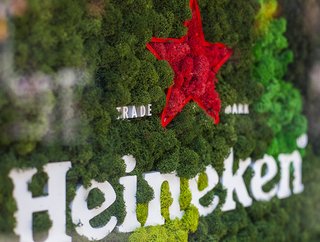Heineken Toasts Success of Supply Chain Transformation

The need for businesses and theory supply chains to adapt and evolve to meet insanely tough market conditions is beyond question. What is still very much open to debate, however, is how organisations can best go about such vast change projects.
The digital transformation landscape is littered with smoking ruins – change projects that failed, usually for quite similar reasons. According to Deloitte, 70% of Digital Transformation results in failure, and even when organisations succeed, it can take them years before they are ready to compete in the digital market.
Often the cause of failure is because there is a mismatch between the tech initiative itself and the organisation’s business goals. The root causes of such mismatches might one, some or all of the following:
- A lack of executive leadership
- The absence of a collaborative culture
- A failure to ensure the right people are in place to see the project across the line
- Mistaking change projects as being tech-driven, rather than people-driven.
All of which means that when a multinational business succeeds in seeing its digital transformation project through to completion, and according to plan, then people want to know how this was achieved.
One such success story is Heineken Europe, which recently completed the transformation of its supply chain across the region, and now uses 52% fewer unique bottles, has cut by 50% the amount of secondary packaging it uses, and has gone from having 25 supply and operations planning teams to just one.
Heading up that mammoth project was Thibaut Boidin, now CEO of Heineken in Romania, but formerly Chief Transformation Officer for Heineken in France.
Heineken designs low carbon operations
Europe is a huge region for Heineken, where it runs 25 operating companies. Boidon reveals that in transforming its European supply chain it targeted four areas:
- Simplifying the complexity of its product and packaging
- Leveraging its network of operating companies
- Improving and harmonising its way of working
- Designing low-carbon footprint operations
Speaking to Boston Consulting Group, Boidon reveals that Heineken did not have to wait long before the transformation began to bear fruit.
“It's quite amazing,” he says, “because even in the first year of our transformation we already saw some significant results.”
The transformation helped Heineken achieve a 52% reduction in the volume of unique bottles used by the company, and also cut by 50% the amount of secondary packaging used.
It has also cut carbon emissions in production by 24% compared to 2018 levels.
But most crucially, it went from having 25 supply and operations planning teams to just one.
Boidon led Heineken’s Transformation Management Office (TMO), and says the TMO was vital for the success of this transformation.
“It was absolutely critical because while you drive a transformation you have also, at the same time, got to drive your day-to-day business,” he says.
He adds: “So if you don't have a ‘ninja’ that helps you drive the transformation while the rest of the organisation is focusing on the day-to-day business, it's quite a challenge to run it.
People 'critical to logistics transformation'
“The human and people element to change management is critical for the success of any transformation. People are at the core of our transformation because we cannot run a transformation without really focusing on our people.”
This echoes what industry experts believe – that most digital transformation projects fail because organisations treat transformation as a tech project rather than a people project.
To this end, Boidon says Heineken decided to shape its change-management transformation around three components.
“The first is leadership, because everything starts with us as leaders,” he explains. “How we run the transformation, and how we are able to engage the organisation around what has to be done.”
He adds: “The second element is around capabilities – the competencies of our people. Here it's about filling the gap between where they are today and where they need to be tomorrow.
“And then there is communication, because in such a big transformation happening across different operating companies you have to make sure you have something that is tailored to the local reality."
********
Check out the latest edition of Supply Chain Digital Magazine and sign up to our global conference series: Procurement & Supply Chain LIVE 2024.
Supply Chain Digital is a BizClik brand







